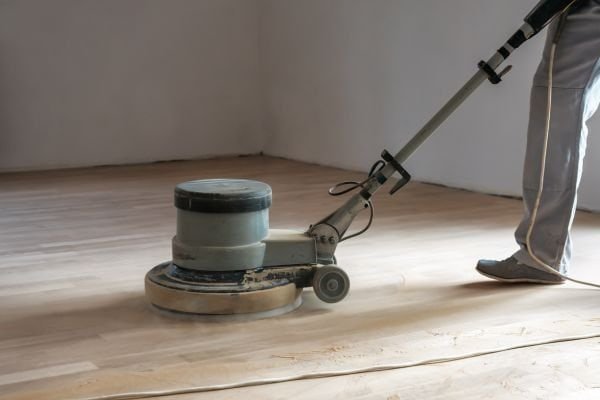Timber floors are a beautiful addition to any home, providing warmth and character that enhances your living space. However, like any other element of your home, they require regular maintenance to keep them looking their best. Sanding and polishing are essential processes that not only restore the beauty of your floors but also extend their lifespan. Over time, wear and tear can manifest in various forms, and it’s crucial for homeowners to be aware of the signs that indicate it’s time for professional care.
If you’ve noticed any of these signs, it may be time to restore your floors. Keep reading to learn more!
Sign #1: Visible Scratches & Scuff Marks
If you’ve noticed scratches or scuff marks on your timber floors, you’re not alone. Everyday foot traffic, moving furniture, and even pet claws can contribute to this wear. While minor scratches can often be touched up with DIY solutions, deeper marks typically require professional sanding. This process effectively removes scratches and restores a smooth surface, bringing your floors back to life.
Sign #2: Dull & Faded Appearance
A once vibrant floor can lose its shine over time due to factors like sunlight exposure, dirt accumulation, and general wear. If your timber floors are looking dull and faded, polishing can work wonders. A high-quality polish not only enhances the natural beauty and lustre of the wood but also offers long-lasting results, keeping your floors looking fresh and inviting.
Sign #3: Stains & Water Damage
Accidents happen! Water spills, pet mishaps, and stubborn stains from food or drinks can leave their mark on your timber floors. Signs of water damage, such as discolouration, swelling, or warping, are particularly concerning. Sanding can effectively remove surface stains, while polishing provides a protective layer, safeguarding your floors against future damage.
Sign #4: Uneven or Worn-Out Floorboards
Over time, some areas of your floors, especially high-traffic zones, may show signs of excessive wear. Uneven surfaces not only look unsightly but can also pose safety hazards. Sanding plays a critical role in evening out the floor, ensuring a smooth finish that enhances both aesthetics and safety.
Sign #5: Peeling or Flaking Finish
If you’re noticing a peeling or flaking finish on your timber floors, it’s a clear indicator that your floors are at risk. This deterioration can result from improper cleaning products, heavy foot traffic, or moisture exposure. A fresh coat of polish, applied after sanding, can protect your floors and significantly enhance their durability.
Benefits of Professional Floor Sanding & Polishing
Investing in professional floor sanding and polishing offers numerous benefits. Not only does it enhance the aesthetic appeal of your home, but it also prolongs the lifespan of your timber flooring. A well-maintained floor increases property value and creates a more inviting atmosphere. Moreover, professional services ensure a high-quality, dust-free finish that DIY methods often can’t achieve.
How Often Should You Sand & Polish Your Floors?
The frequency of sanding and polishing largely depends on the level of foot traffic your floors experience. For homes with moderate use, it’s generally recommended to consider this maintenance every 7-10 years. Other factors, such as the type of timber, the quality of the finish, and your maintenance habits, will also influence longevity. To keep your floors in top condition between treatments, regular cleaning and using the right products is essential.
In summary, if you notice any of the five key signs indicating your floors need sanding and polishing, don’t hesitate to take action. Addressing these issues promptly can prevent minor problems from escalating into major repairs.






